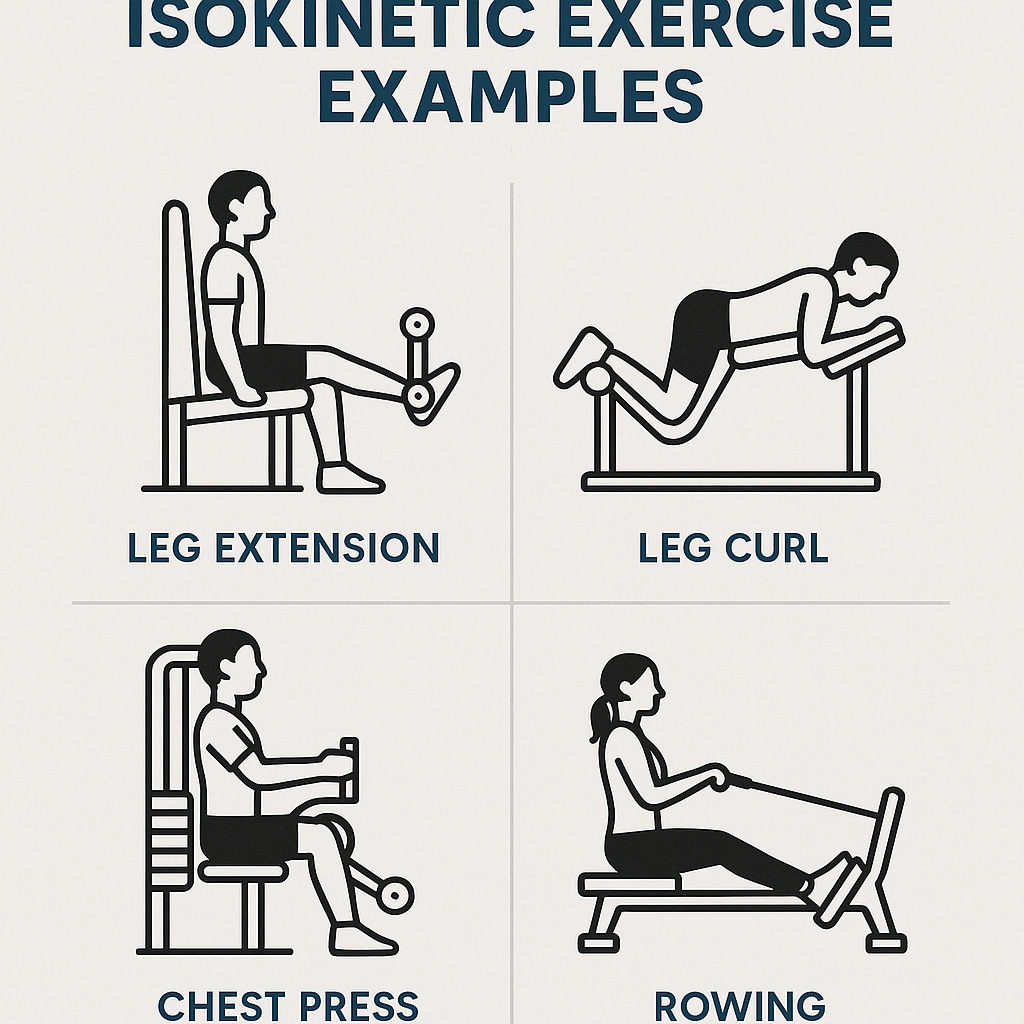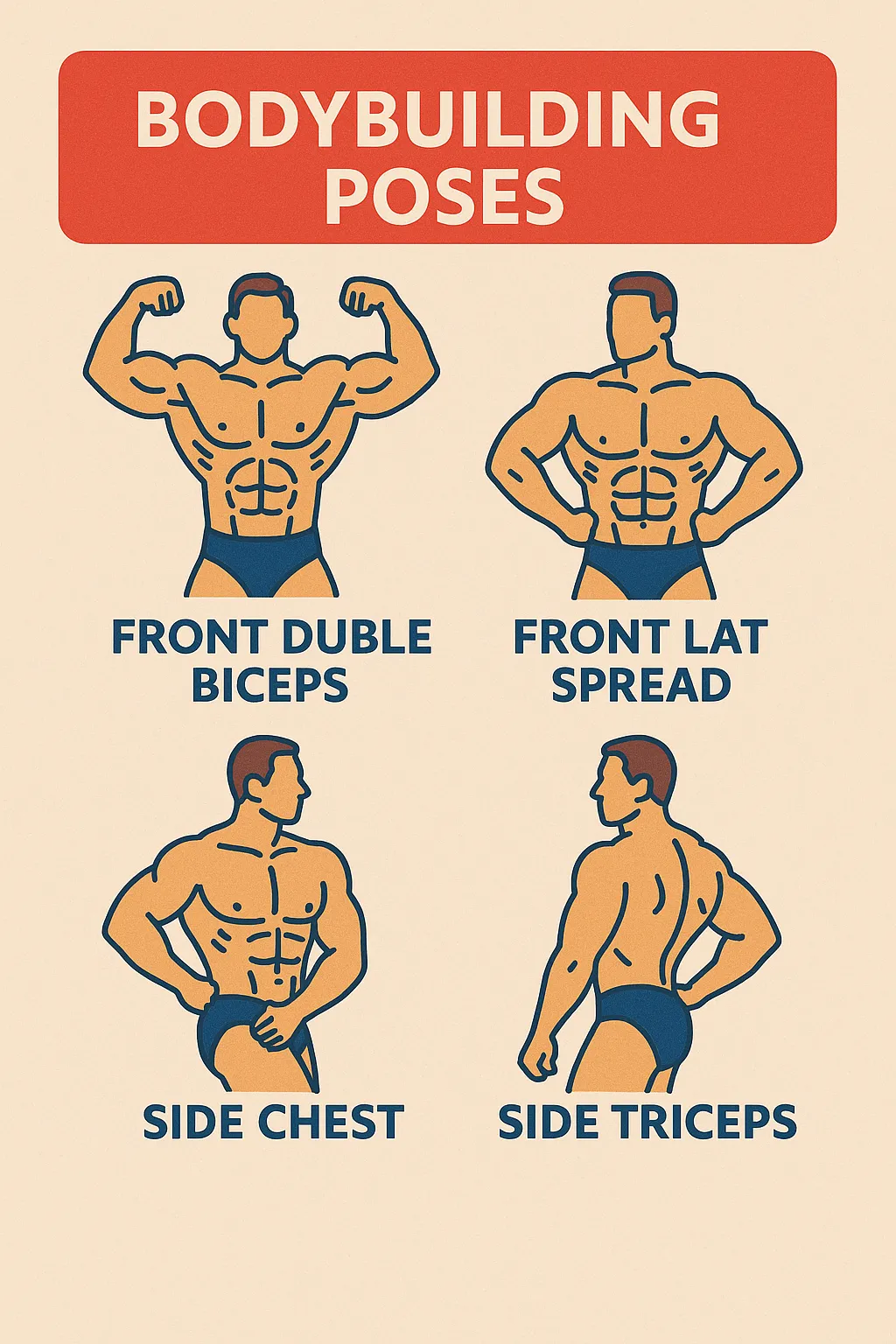Physical fitness is extremely important for maintaining a healthy lifestyle, and knowing the types of physical exercise can help improve performance, rehabilitation, and general well-being.
But another type of exercise — less commonly understood but highly effective — is the isokinetic exercise.
In this blog, we’ll deep dive into what isokinetic exercise is, how it provides benefits, how isokinetic exercise is different than other types, and give detailed examples of how to include it in your fitnes s or rehabilitation routine.
What is Isokinetic Exercise?
Isokinetic exercise is a form of strength training where the velocity of the muscle contraction is held constant over the range of motion. The Greek word “isokinetic” is composed of two part: iso means equal and kinetic means motion.
This form of exercise apparatus is usually done on very specialized equipment which exerts a constant speed independent of how hard you push.
Isokinetic exercises, on the other hand, keep the muscle under tension throughout the full movement by adjusting the resistance (bodyweight- or cable-based resistance) so that it is worked evenly throughout the entire range of motion (ROM) unlike isotonic (constant tension) or isometric (no movement) exercises.
It provides greater precision in motor control and is commonly used in physical therapy and sports rehabilitation.
Advantages of Isokinetic Workouts
Isokinetic exercises have many benefits, especially in rehabilitative and performance-based contexts:
1. Controlled Movement: Machines provide a consistent speed of movement during exercise, which reduces the risk of injury.
2. Benefits of Machines vs. Free Weights: Improving Muscle Strength: Each muscle group worked, using full range of motion.
3. Muscle Imbalance Correction: Detects and addresses unilateral strength imbalances.
4. Data Feedback: Machines frequently include data feedback so people can gauge their progress.
5. Safe for Recovery: Particularly helpful for those rehabilitating after surgery or injury because of its controlled environment.
Different Types of Resistance Exercises Explained: Isokinetic vs. Isotonic vs. Isometric
Isokinetic Exercise Equipment
To conduct real isokinetic exercises, you commonly require specialized machines, like:
Biodex System
Cybex Norm
Kin-Com Dynamometer
These machines offer resistance that adjusts to match the operator’s force output while maintaining a constant speed.
Isokinetic Exercise Examples
To gain a better understanding of how isokinetic exercises work in practical applications, let’s take a look at examples by muscle group and body region.
Knee Extension and Flexion Isokinetic
Muscles Used: Quadriceps and hamstrings
Equipment: Others (Biodex or Cybex machine)
How It Works: One is seated with a leg secured into a lever arm. When they extend or flex the knee, the machine automatically adjusts the resistance to maintain a constant speed, for example 60°/sec.
Used For: ACL injury rehab, post-knee surgery strengthening, athletic performance testing.
Isokinetic Shoulder Rotation
Muscles Worked: Rotator cuff muscles
Equipment: An isokinetic dynamometer
Internal and External Rotation: An arm at 90 degrees from the torso The machine moves with constant angular velocity, and the user rotates the shoulder inward and outward.
Used For: Rehab for shoulder injuries, athlete throwing mechanics
Ankle Dorsiflexion and Plantarflexion Isokinetics
Target muscles ► Tibialis anterior, gastrocnemius, soleus
Equipment: Dynamometer with ankle isokinetic attachment
How It Works: A user’s foot is strapped to a footplate, and he or she pushes or pulls against resistance at a predetermined speed.
What it’s used for: Rehabilitation after an ankle sprain, gait rehabilitation.
Elbow Flexion and Extension isokinetic
Muscles Used: Biceps brachii, triceps brachii
Sport-specific equipment: Upper-limb isokinetic device
How It Works: Users curl and press against resistance controlled by a machine.
Used For: Rehabilitation after fracture & strength test.
Hip Abduction and Adduction (Isokinetic)
Target Gluteus medius, adductor longus
Tools: Leg attachments for isokinetic equipment
How It Works: The legs push against resistance, sitting down or lying down (abduction) and back together (adduction).
Uses: Stabilizing the hip joint, rehab following surgery
Isokinetic Trunk Rotation
Muscles Worked: Obliques, erector spinae
Trunk rotation machine
How It Works: The torso rotates left and right at a specific angular velocity.
Age: Open Compound/Isolation: IsolationUsed For: Lower back pain rehab, core strengthening, postural improvement.
Isokinetic Cycling
MUSCLES WORKED: Quadriceps, hamstrings, glutes
Contains: Isokinetic ergometer (e.g., Monark bike with Isokinetic mode)
How It Works: The bike keeps pedaling at a consistent speed, forcing the rider to apply changing power.
Purpose: Cardiovascular endurance with strength components, specifically in sports conditioning.
Isokinetic Rowing
Muscles Worked: Latissimus dorsi, trapezius, biceps
Material and methods : Isokinetic rowing ergometer
How It Works: The machine forces the speed of the pull stroke no matter how hard you are pulling.
Purpose: Upper-body endurance training, back muscle rehab.
Isokinetic Exercises — Applications
A. PT and Rehabilitation
Isokinetic machines are commonly used in clinical settings to facilitate the rehabilitation process for various injuries, such as:[Edit]
ACL tears
Rotator cuff injuries
Stroke rehabilitation
Post-surgical muscle atrophy
Therapists can accurately assess muscles performance and customize programs according to real-time feedback.
B. Testing of Athlete Performance
Isokinetic testing is used by sports teams and trainers to:
Assess limb imbalance in muscle groups
Spot weaknesses or excesses
Track performance improvement over time
This data can help prevent injuries and optimize training regimens.
C. Muscle building and strength Workouts
Less commonly seen in standard gyms, some high-end training centers employ isokinetic machines for:
Strength training; intense strength development
Resistance workouts that spare the joints
Isolated muscle targeting
The Drawbacks of Isokinetic Exercises
While isokinetic exercises have their advantages, it also has its drawbacks:
1. Cost: Equipment can be pricey and not often found outside clinical or sports performance facilities.
2. Avilability: Most home or commercial gyms do not have these.
3. Complexity: Trained individuals must typically operate equipment and interpret results.
4. Isokinetic Movements: Biomechanics may not directly translate to functional movements.
Other Approaches (Simulated Isokinetics)
If specialized machines are not available isokinetic effects can be simulated using:
1. Isotonic Exercise — Resistance Bands: Provide variable resistance like in isokinetics.
2. Partner Resistance: A partner exerts resistance while moving at a steady pace.
3. Slower, Controlled Reps: Slowing down the phases of movement to highlight muscle recruitment.
Although these methods are not really isokinetic, they can offer some of the same benefits when applied correctly.
Conclusion
Isokinetic exercise is great for rehab, improving performance, and muscle testing. Although they’re now exclusively used at fitness facilities and require special device(s) to operate, their capacity for providing steady state motion with adjustable torque makes them unparalleled in effectiveness.
From knee and shoulder rehabilitation to elite sports performance analysis, isokinetic exercises are a cornerstone of modern fitness and health science.
With good knowledge of these principles—whether we are using expensive gadgets or other tools—we can become stronger, FREE of injuries and recover better from them.
If you’re in physical therapy or looking to advance your regimen, talk to a physical therapist or trainer about adding in isokinetic exercises.







